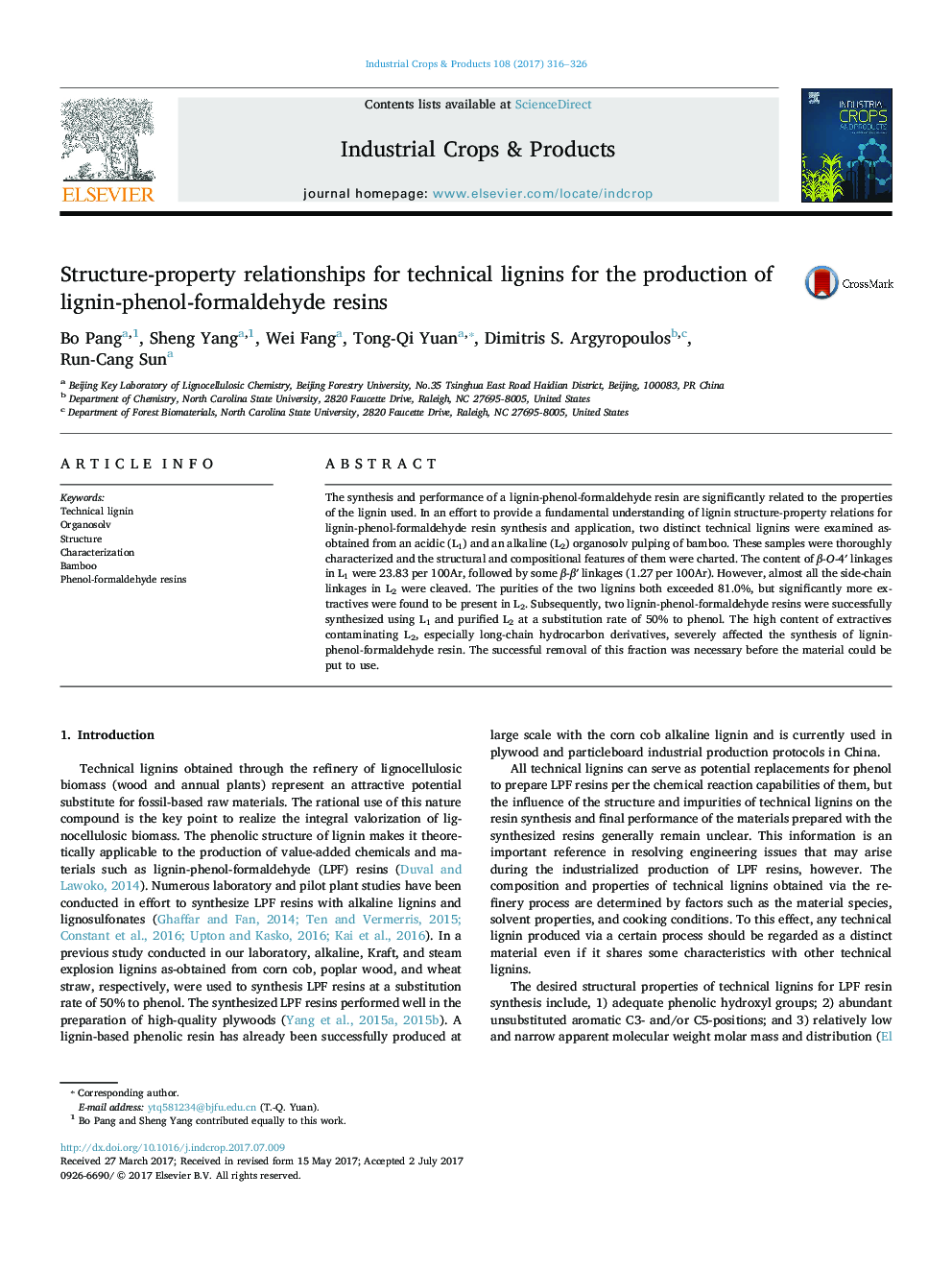| Article ID | Journal | Published Year | Pages | File Type |
|---|---|---|---|---|
| 5761855 | Industrial Crops and Products | 2017 | 11 Pages |
Abstract
The synthesis and performance of a lignin-phenol-formaldehyde resin are significantly related to the properties of the lignin used. In an effort to provide a fundamental understanding of lignin structure-property relations for lignin-phenol-formaldehyde resin synthesis and application, two distinct technical lignins were examined as-obtained from an acidic (L1) and an alkaline (L2) organosolv pulping of bamboo. These samples were thoroughly characterized and the structural and compositional features of them were charted. The content of β-O-4Ⲡlinkages in L1 were 23.83 per 100Ar, followed by some β-βⲠlinkages (1.27 per 100Ar). However, almost all the side-chain linkages in L2 were cleaved. The purities of the two lignins both exceeded 81.0%, but significantly more extractives were found to be present in L2. Subsequently, two lignin-phenol-formaldehyde resins were successfully synthesized using L1 and purified L2 at a substitution rate of 50% to phenol. The high content of extractives contaminating L2, especially long-chain hydrocarbon derivatives, severely affected the synthesis of lignin-phenol-formaldehyde resin. The successful removal of this fraction was necessary before the material could be put to use.
Related Topics
Life Sciences
Agricultural and Biological Sciences
Agronomy and Crop Science
Authors
Bo Pang, Sheng Yang, Wei Fang, Tong-Qi Yuan, Dimitris S. Argyropoulos, Run-Cang Sun,
